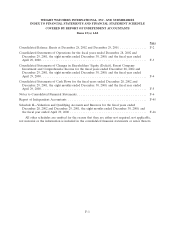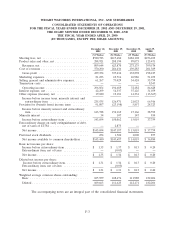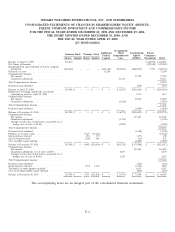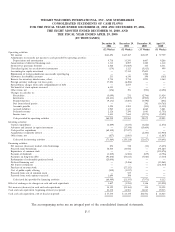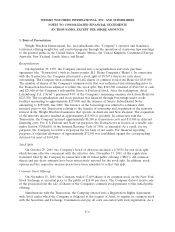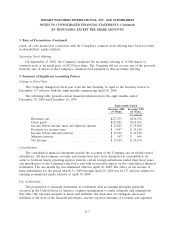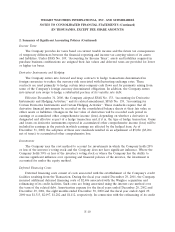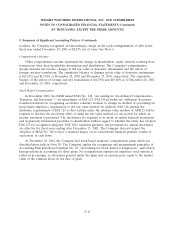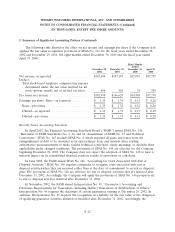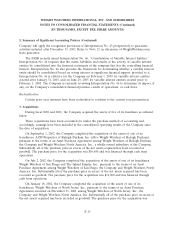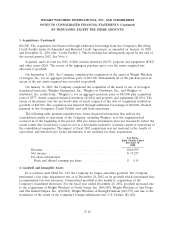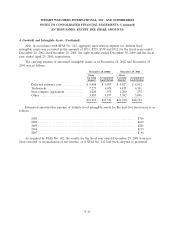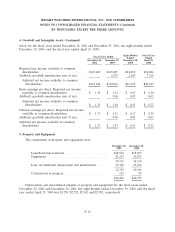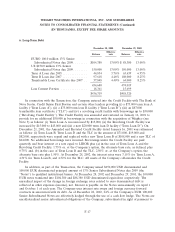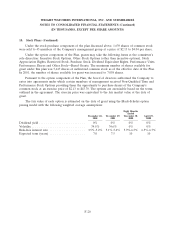WeightWatchers 2002 Annual Report Download - page 60
Download and view the complete annual report
Please find page 60 of the 2002 WeightWatchers annual report below. You can navigate through the pages in the report by either clicking on the pages listed below, or by using the keyword search tool below to find specific information within the annual report.WEIGHT WATCHERS INTERNATIONAL, INC. AND SUBSIDIARIES
NOTES TO CONSOLIDATED FINANCIAL STATEMENTS (Continued)
(IN THOUSANDS, EXCEPT PER SHARE AMOUNTS)
2. Summary of Significant Accounting Policies (Continued)
facilities, the Company recognized an extraordinary charge on the early extinguishment of debt in the
fiscal year ended December 29, 2001 of $2,875, net of taxes. See Note 6.
Comprehensive Income:
Other comprehensive income represents the change in shareholders’ equity (deficit) resulting from
transactions other than shareholder investments and distributions. The Company’s comprehensive
income includes net income, changes in the fair value of derivative instruments and the effects of
foreign currency translations. The cumulative balance of changes in fair value of derivative instruments
is $(2,675) and $(3,920) at December 28, 2002 and December 29, 2001, respectively. The cumulative
balance of the effects of foreign currency translations is $(1,198) and $(9,403) as of December 28, 2002
and December 29, 2001, respectively.
Stock Based Compensation:
In December 2002, the FASB issued SFAS No. 148, ‘‘Accounting for Stock-Based Compensation—
Transition and Disclosure’’,—an amendment of FAS 123, FAS 148 provides two additional alternative
transition methods for recognizing an entities voluntary decision to change its method of accounting for
stock-based employee compensation to the fair value method. In addition, FAS 148 amends the
disclosure requirements of FAS 123 so that entities under the intrinsic value method of APB 25 will be
required to disclose the pro forma effect of using the fair value method for any period for which an
income statement is presented. The disclosures are required to be made in annual financial statements
and in quarterly information provided to shareholders without regard to whether the entity has adopted
FAS 123 for recognition purposes. FAS 148’s transition guidance and provisions for annual disclosures
are effective for fiscal years ending after December 15, 2002. The Company does not expect the
adoption of SFAS No. 148 to have a material impact on its consolidated financial position, results of
operations, or cash flows.
At December 28, 2002, the Company had stock-based employee compensation plans, which are
described more fully in Note 10. The Company applies the recognition and measurement principles of
Accounting Principles Board Opinion No. 25, ‘‘Accounting for Stock Issued to Employees,’’ and related
Interpretations in accounting for those plans. No compensation expense for employee stock options is
reflected in earnings, as all options granted under the plans had an exercise price equal to the market
value of the common stock on the date of grant.
F-11


